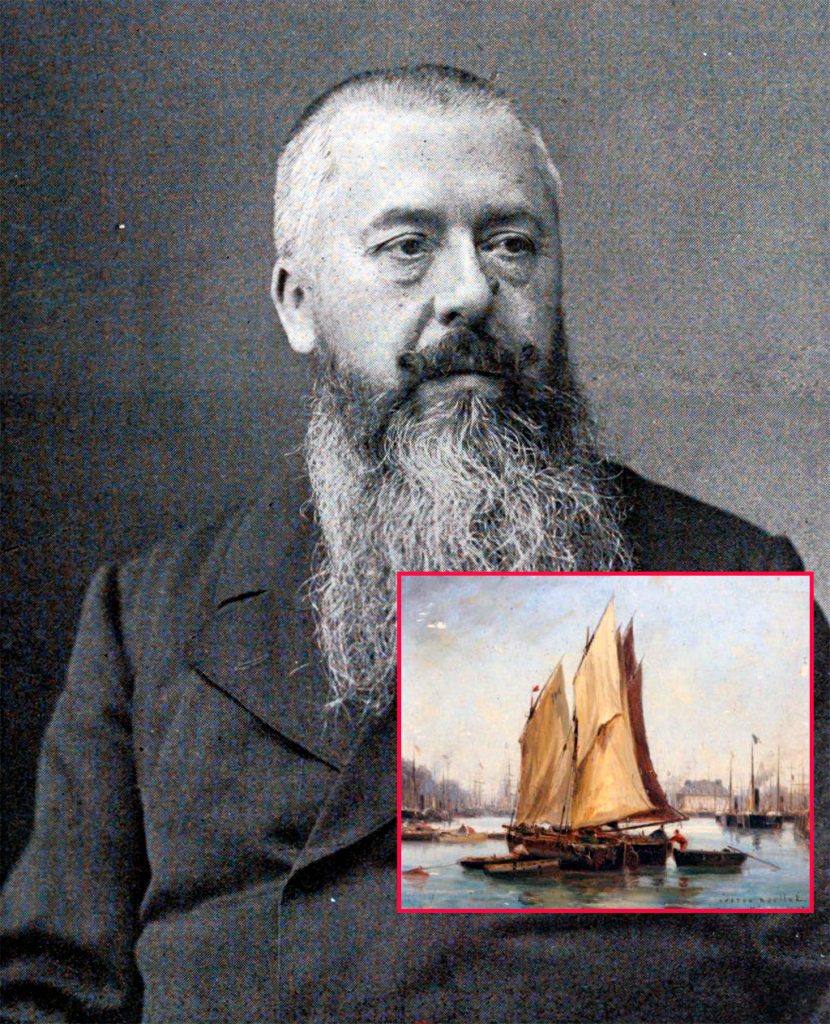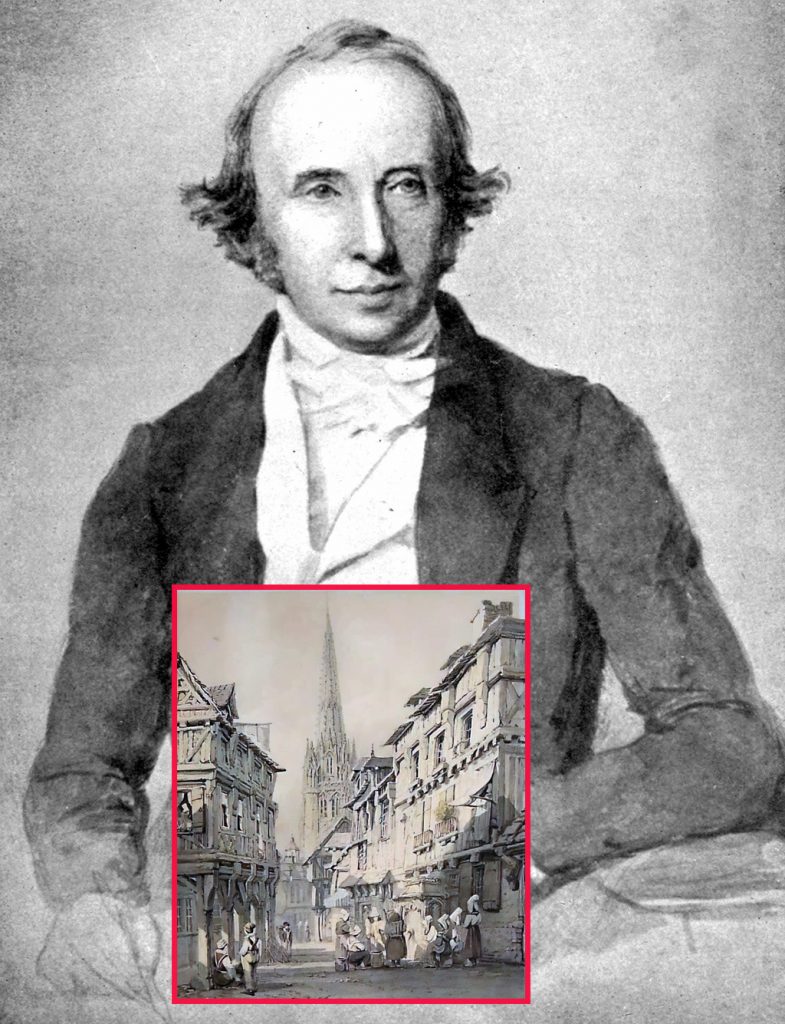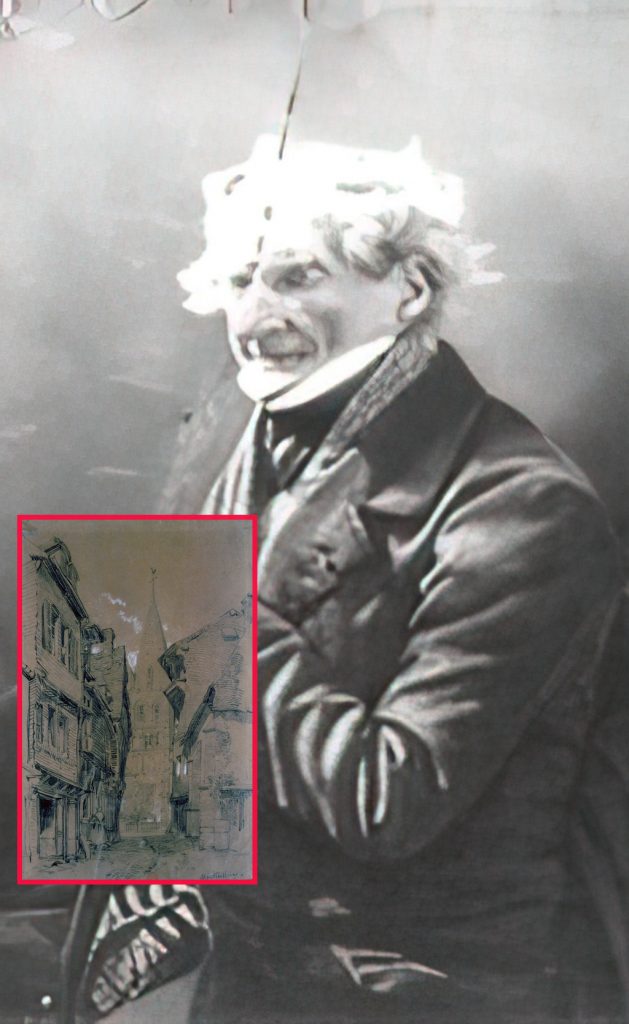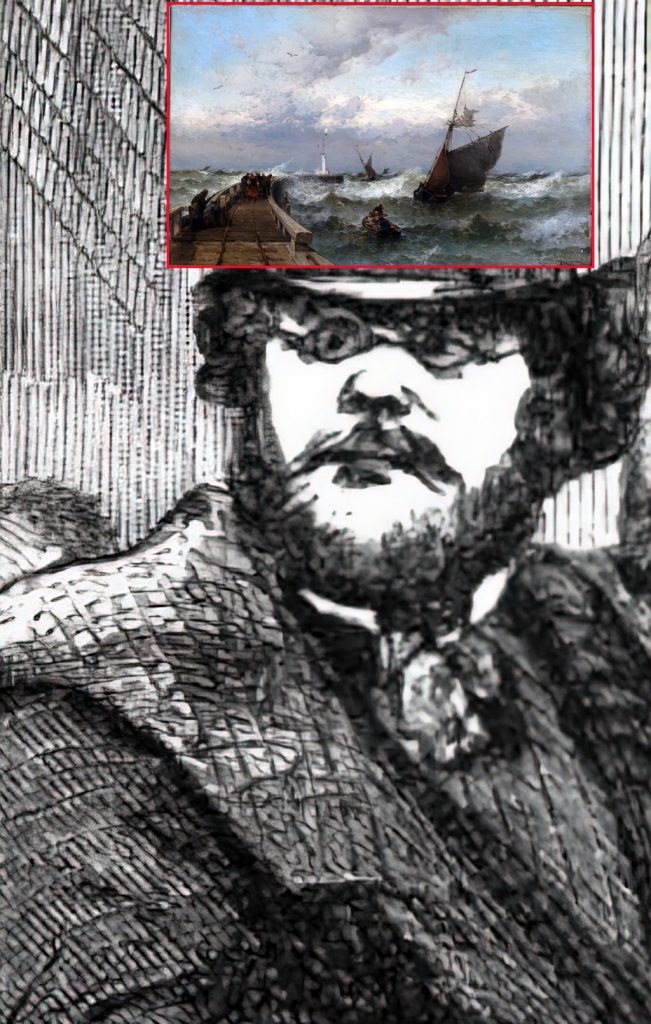Veules-les-Roses – The Artists – Boggs, Frank Myers
Frank Boggs was an American (and later French) painter (born in the USA, died in France). He studied art in Paris, and travelled between France (Normandy), The Netherlands, Italy and Belgium. He naturelized to French citizenship. He is buried next to his artist son in Paris.
Here is the 1 painting of his we found, not in Veules-les-Roses but closeby in Saint-Valery-en-Caux.























